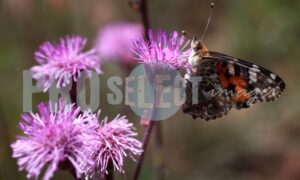Description
Cederberg Conservancy flora
Therina Groenewald: Cederberg Conservancy flora – Professional photographer
There are 34 internationally recognised biodiversity Hotspots in the world. One of them is the Cape Floral Kingdom. It is the smallest of the six Floral Kingdoms of the world.and the only Kingdom encompassed entirely within a single country. The Cape Floral Kingdom is divided in five different vegetation types or biomes. Two of these are found in the Cederberg Conservancy namely the Fynbos Biome and the Succulent Karoo Biome. The Fynbos biome is subdivided in two distinct vegetation groups: Fynbos and Renosterveld.
The vegetation of the conservancy area changes from Fynbos to Succulent Karoo as the climate and geology change from west to east, with Central Mountain Renosterveld to be found in the transition area. The Cederberg Wilderness and adjacent farms comprise of Fynbos vegetation, while vegetation in the eastern section of the Matjiesrivier Nature Reserve and adjacent farms to the east and south changes to Central Mountain Renosterveld and Succulent Karoo.
The Fynbos Biome is largely within the boundaries of the Western Cape with an estimated 9 500 species of which 70% are endemic and contained in this biome. Only 9% of this biome is formally protected.
Fynbos vegetation is largely confined to soils derived from sandstone which are well-leached, infertile soils. Fynbos is recognized by the presence of reeds, ericas and many different types of Proteaceae such as sugarbush proteas, cone bushes, pincushions and spiderheads. Plants commonly seen at lower altitudes are the grey-leaved sugarbush , the spinning top, and the common sunshine conebush. Waboom veld is a predominant feature of the lower slopes where the sturdy, fire-resistant wagon tree gives an almost savannah-like appearance to the landscape. In spring bright patches of purple-blue ridderspoor are eye-catching, as are the large yellow Clanwilliam daisies.
The Cederberg Fynbos is also home to the rooibos tea plant and many different types of buchu with their fragrant oils. Wild olive trees, rockwood, and rock candlewood form woody thickets on dry slopes and round rocky outcrops. In contrast, plants growing along stream banks include the wild almond, the lance-leaved myrtle, and in the streambed itself grows the palmiet rush. On the high plateaus red disas and other orchids occur close to water.
The endemic snow protea occurs on the snow-line of some of the high peaks only. The Clanwilliam cedar tree after which the Cederberg is named, grows along cliffs and rocky areas at an altitude of between 1 200 and 1 700 m.a.s.l. and occurs in a patchy distribution over about 250km2 in the Cederberg. This handsome tree with its gnarled growth form has fragrant, durable wood – a feature shared with the true cedars, such as the Lebanon cedar. The endemic Clanwilliam cedar which was formerly more numerous is now threatened with survival due to several centuries of exploitative harvesting and frequent fires. A unique feature of the dry, eastern Fynbos areas is the presence of large, flat, rock platforms. Plants such as the Clanwilliam sugarbush and many different kinds of small, succulents grow in cracks in the rock slabs. Fynbos vegetation is fire-prone and fires are often a feature in the dry summer season. Fynbos has evolved over millions of years and Fynbos plants have a wide spectrum of survival strategies. However, fires that are too frequent pose a threat to many Fynbos species.
The changeover from Fynbos to succulent Karoo occurs in the valley along which the Wupperthal – Ceres road passes. It is in this transition that Central Mountain Renosterveld is located on the fine-grained clay and silt soils, derived from shale which is more fertile than the sandstone soils. In places the components of both Fynbos and Succulent Karoo plants can be seen, reflecting the transition between the two vegetation types. Renosterveld is characterised by the dominance of members of the daisy family, particularly renosterbos from which the vegetation gets its name. This vegetation type is also rich in geophytes of the iris, lily and orchid families. Grasses are also abundant if not overgrazed by livestock.






Reviews
There are no reviews yet.